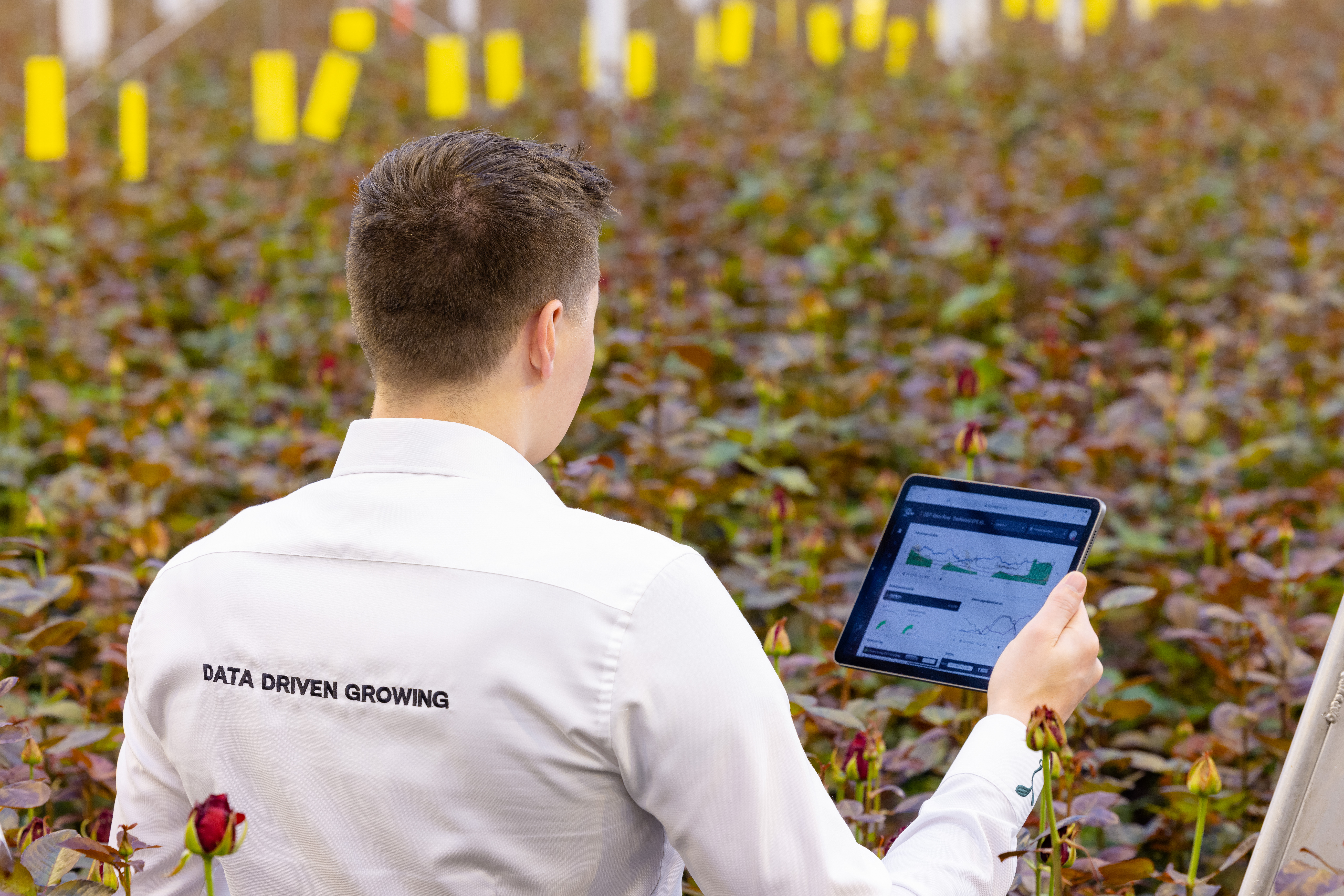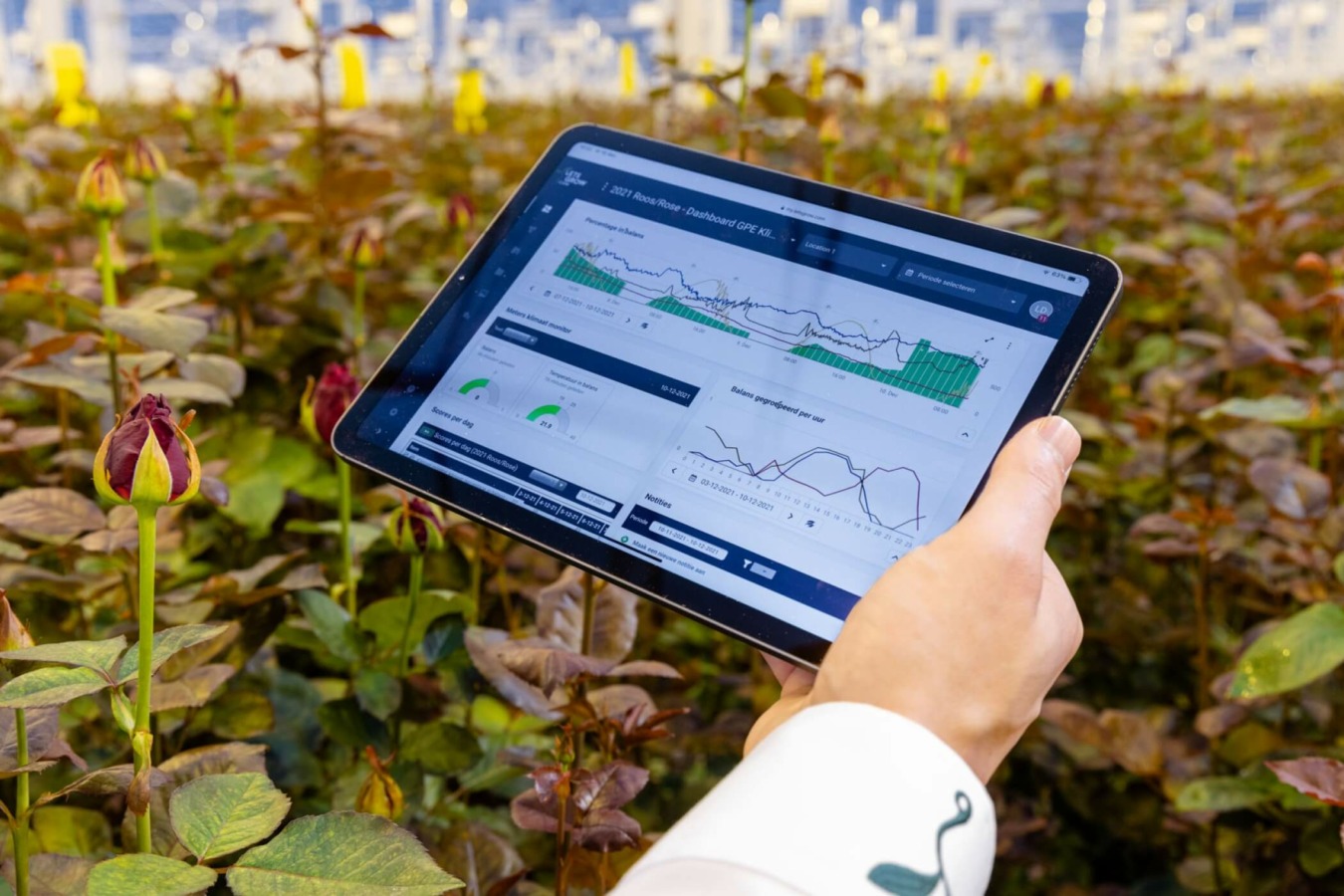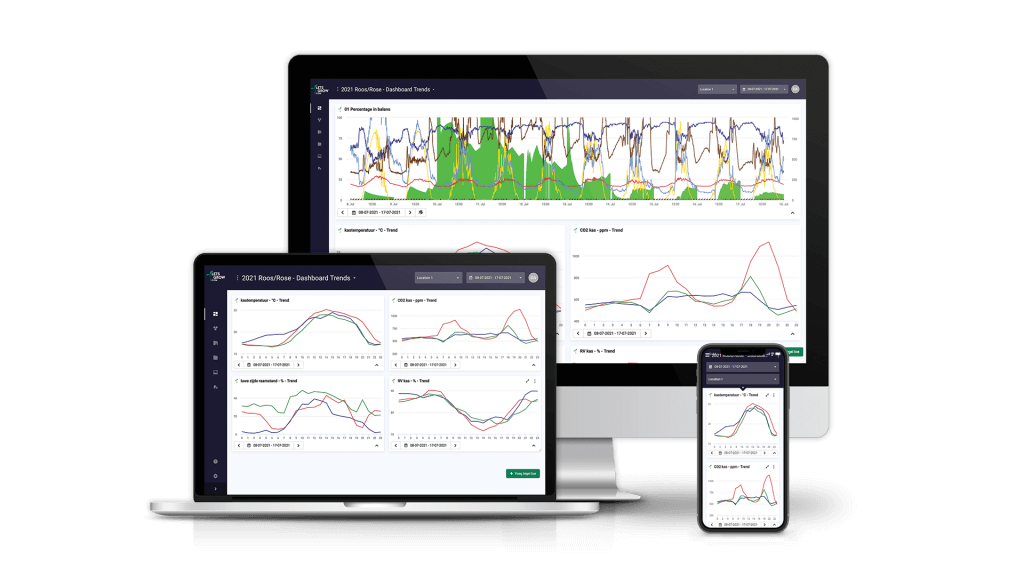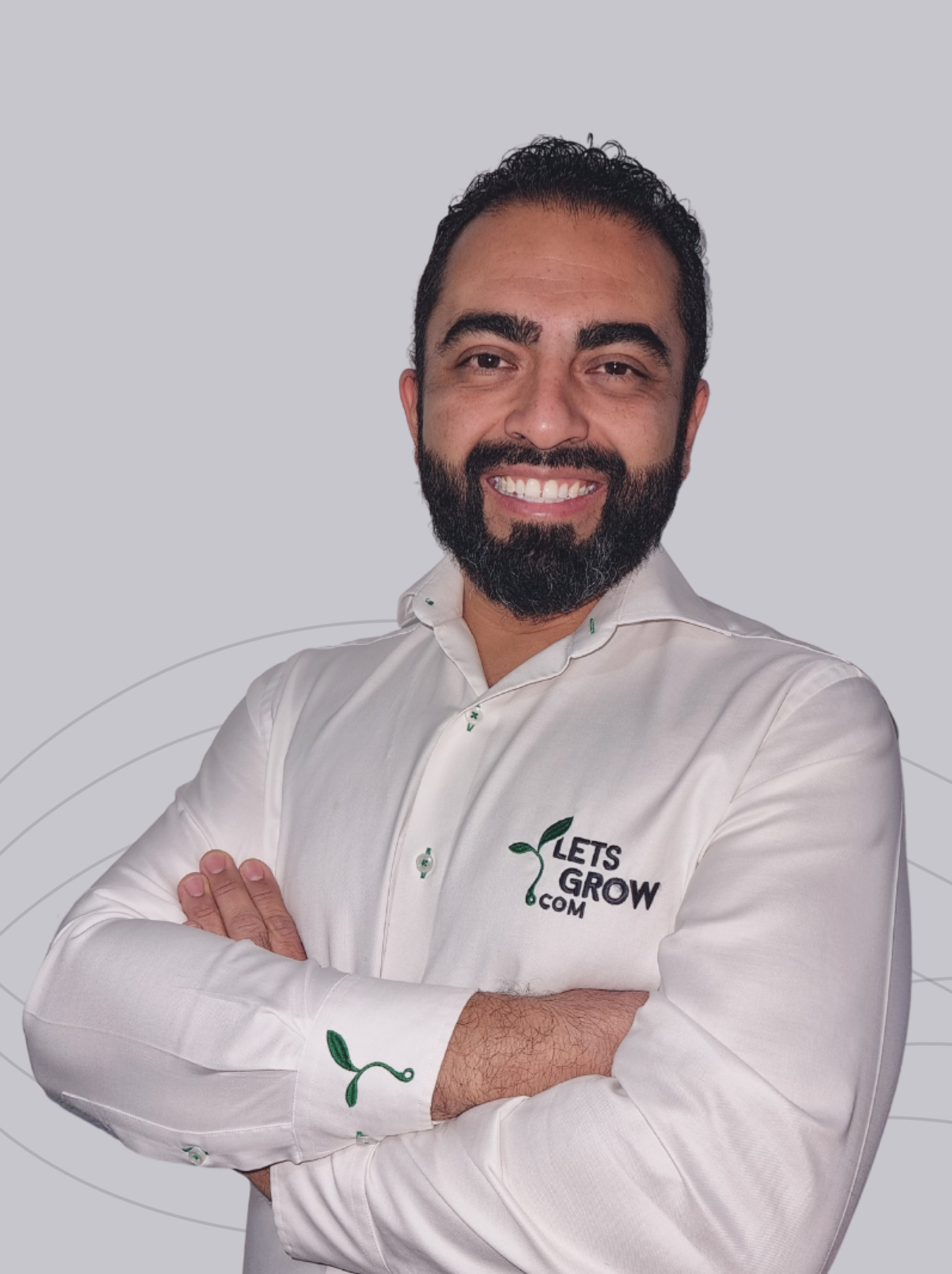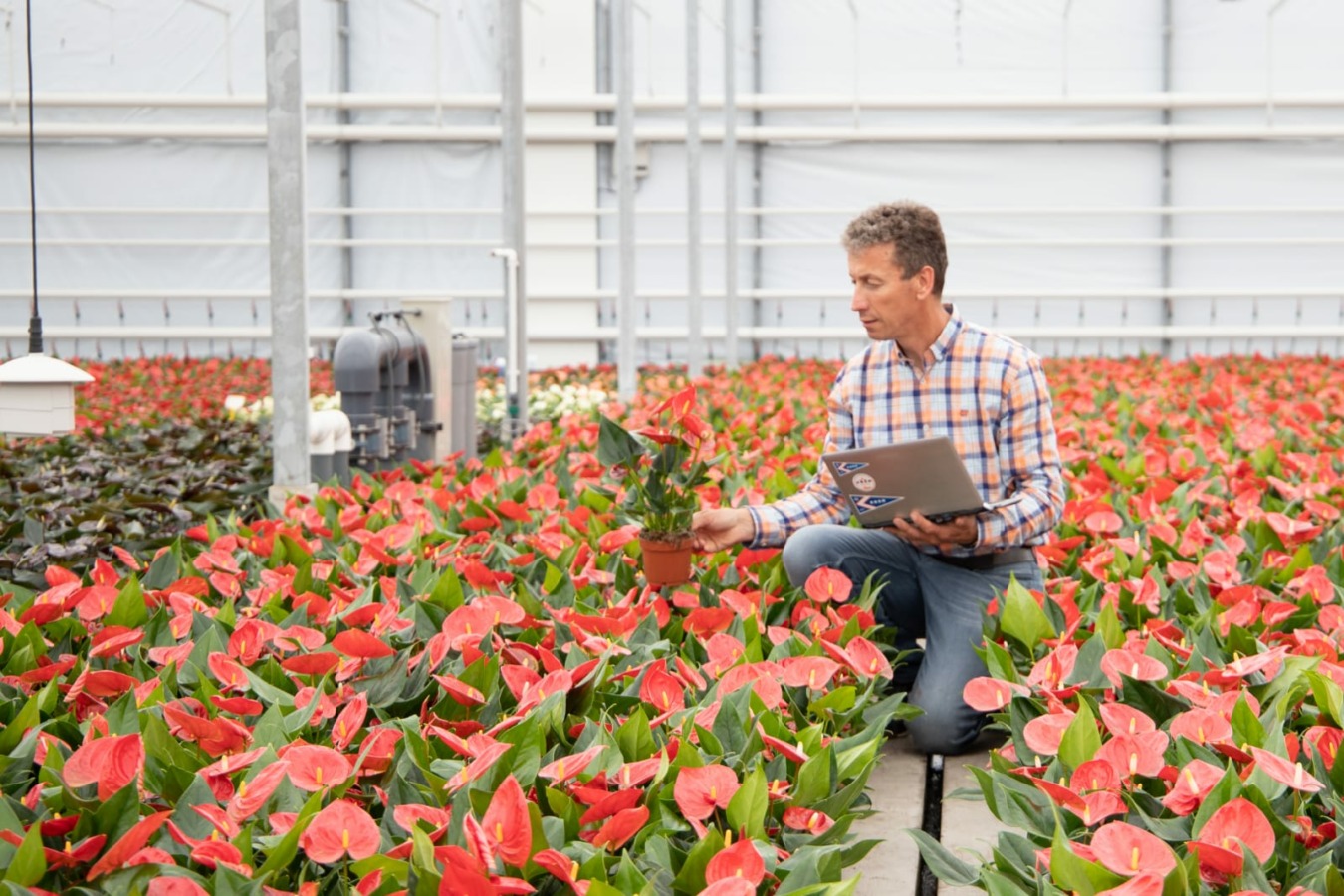
Companies are searching for tools to optimize their crops and yields. Performing data analyses, and discussing the ensuing results, may contribute towards improved insight into limiting cultivation factors. Clear and consistent communication about that data enables reliable and productive knowledge and experience sharing.
Nowadays, manually maintaining a bird's eye view of the enormous amount of available data becomes increasingly impossible. Data analysis programs, capable of connecting cultivation factors and providing insight into the limiting factor, offer a solution.
There are instances where cultivation measures, selected by humans, have a positive impact on short-term production, while computer-produced prognoses show substantial negative long-term consequences for the crop. For example, crops grown under artificial lighting exit the long and dark winter season.
Growing based on objective cultivation data and data analyses also increases the ease with which data can be captured and knowledge shared. This secures valuable company knowledge when, for example, one or more managers leave. Transferring human cultivation experiences (‘green thumbs’) often proves a challenge.
Reviewing data requires focus, to prevent erroneous conclusions from being drawn. Two cultivation factors running in parallel within a simple comparison chart, do not necessarily prove an actual fixed causal link between them.
Independent crop consultant Peter Geelen: “For example, Vapour Pressure Difference (VPD) correlates with the evaporation rate. But if you assume you can increase evaporation by increasing the VPD, then you are assuming an incorrect cause-effect relationship. The evaporation rate is actually dependent on the energy supply, like radiation. The crop influences the VPD through its stomata openings. Which, in turn, depends on the water availability inside the leaf.
Comparability
A discussion among growers about cultivation data and data analyses creates added insight and makes it possible to compare the results of various cultivation locations. However, clear and consistent communication about this topic requires a critical examination of how data is being monitored.
“When you really start growing based on data, it makes the data you capture much more reliable. That is often the first benefit you will get.” Like having a uniform method for capturing the setting and average fruit weight across all of your locations.
Independent crop advisor Peter Geelen: “You could capture actual kilogram production in ten different ways. For comparison purposes, it is of much higher importance that you do so consistently rather than how you measure.”
The need for clarity and consistency also applies to the review and comparison of yields between years or cultivation locations. To this end, Light Use Efficiency (LUE) offers much better insight than solely looking at kilogram production. Growers who have been working with an LUE analysis for longer (see the article on page 22), can tell that their plant load is better suited to the (expected) light sum year round. Then a decrease in plant load or stem density can be beneficial for growing at higher temperatures, which in turn makes it easier to control moisture and to efficiently handle CO2. As long as the proper light-temperature ratio is maintained, a quicker fruit maturation does not have to negatively affect production.
The next step is to determine the light-temperature ratio based on the PAR light inside the greenhouse, rather than the number of joules outdoors. Then the impact of lighting, screening, and white washing can easily be calculated based on the light sum available to the crop. The PAR sum in the greenhouse can be measured with PAR sensors. Additionally, outside light can be converted to PAR light inside the greenhouse, if the light transmission of the greenhouse roof, screen, or coating is known.
Unequivocalness
Babel-like confusion easily occurs when comparing crop data and yields. Therefore, entrepreneurs from several large companies wanted to ensure that all of their crop managers would be on the same page. As part of the Next Generation Growing framework, they have set up meetings to bring everyone to the same level of knowledge and to ensure that everyone speaks ‘the same language’. Sometimes even upper management and crop consultants are included in these sessions, simply to further unify communication about cultivation situations and decisions.
Geelen, who guides such groups: “To avoid situations where one grower thinks of a very different plant balance when he’s discussing ‘generative crops’ than another. Or, another example, when one person speaks extensively of the ‘energy balance’ in his plants while the other person does not have a clear image in his head of what this Next Generation Growing term means. Therefore causing resistance and incomprehension.”
Additionally, the personal views of growers and crop managers are examined through data reviews. Sometimes discussion groups have turned a growing method, such as a generative crop, into a goal all on its own, rather than selectively applying it to reach a certain desired crop result. Continuously attempting to reach such a generative crop may limit the stomata activity, if data analysis shows that the LUE is suboptimal because other climate factors have become limiting.
To keep an eye on the limiting factor at all times, LetsGrow.com has developed a number of modules, such as the climate monitor and the plant balance module. They are tools that help keep track of the many interrelated factors. According to Geelen, these tools help guide, improve and compare crops.
Source: Groenten & Fruit | Author: Peter Visser
Stay informed
"*" indicates required fields
